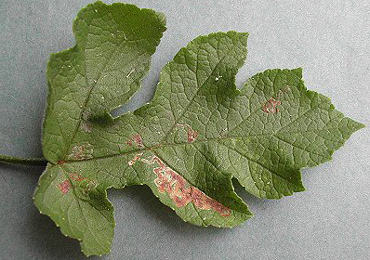|
||||||
|
Phytomyza
sphondyliivora Spencer, 1957 Phytomyza
sphondyliivora Spencer, 1957a. Entomologist's Gaz.
8: 23 |
||||||||||||||||||||||||||||||||||||||||||||||||||
Leaf-miner: Mine inter-parenchymal, greenish-yellow, not always readily visible, an irregular linear-blotch (Spencer, 1972b: 78 (fig. 260)). Broad, irregular interparenchymatous corridor, here and there widening into a blotch; fairly inconspicuous. Frass grains few, irregularly scattered. Pupation outside the mine (Bladmineerders van Europa). The leaf discolours as the larva mines through the parenchyma of the leaf. The mine is inter-parenchymal, greenish-yellow, not always readily visible, an irregular linear-blotch (British leafminers).
Larva: The larvae of flies are leg-less maggots without a head capsule (see examples). They never have thoracic or abdominal legs. They do not have chewing mouthparts, although they do have a characteristic cephalo-pharyngeal skeleton (see examples), usually visible internally through the body wall. The larva is described Hering (1955a: 280, as Ph. sp). Puparium: The puparia of flies are formed within the hardened last larval skin or puparium and as a result sheaths enclosing head appendages, wings and legs are not visible externally (see examples). Hosts in Great Britain and Ireland:
Hosts elsewhere:
Time of year - mines: Summer (British leafminers). Time of year - adults: Currently unknown. Distribution in Great Britain and Ireland: Widespread in England - London (Hampstead), Dorset (Studland), Wiltshire (Corsham), Somerset (Cheddar), Huntingdonshire (Monk's Wood) (Spencer, 1972b: 81) and Warwickshire (Keresley) (Robbins, 1991: 67); Anglesey, Cumberland, East Sutherland, Glamorgan, North Somerset and South Lancashire, (NBN Atlas) Distribution elsewhere: Europe (Spencer, 1990: 178) including ? Austria, French mainland, ? Germany and Poland (Fauna Europaea). NBN Atlas links to known host species:
British and Irish Parasitoids in Britain and elsewhere:
|
| Last updated 10-Jul-2019 Brian Pitkin | ||

